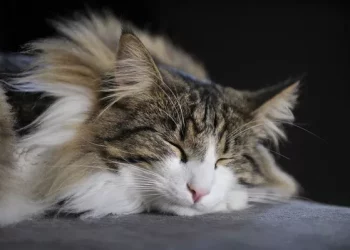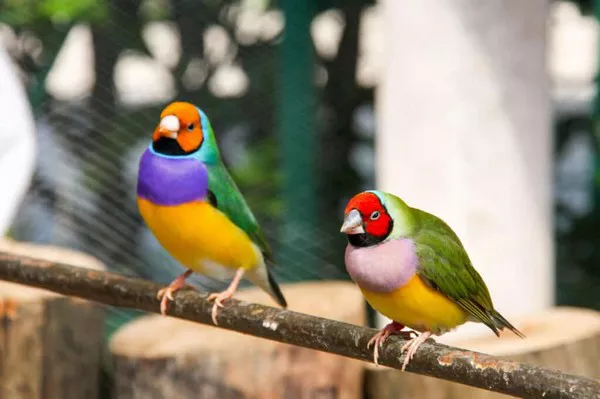The Egyptian Mau is one of the most distinctive and ancient breeds of domestic cats, renowned for its striking appearance and unique characteristics. One of the most captivating features of the Egyptian Mau is its spotted coat, which sets it apart from other breeds. In this article, we will delve into the biology and genetics of the spots on an Egyptian Mau’s skin, their purpose, and their historical significance. By understanding the origins and functions of these spots, we can appreciate not only the beauty of the Egyptian Mau but also the intricate science behind its coat.
The Egyptian Mau: An Overview
History and Origin
The Egyptian Mau is often believed to be one of the oldest domesticated cat breeds, with roots tracing back to ancient Egypt. Historical artifacts, including paintings and sculptures, depict cats that closely resemble the modern Mau, suggesting that this breed has been revered for thousands of years. The name “Mau” translates to “cat” in ancient Egyptian, highlighting its significance in Egyptian culture.
Physical Characteristics
The Egyptian Mau is characterized by its muscular build, striking green eyes, and, most notably, its unique coat patterns. These cats typically display a variety of spots, which can range in color from charcoal to silver, bronze, and smoke. The spots are randomly distributed and can appear in various shapes and sizes, contributing to each cat’s individuality.
Understanding the Spots: Genetics and Biology
Genetic Factors
The spots on an Egyptian Mau’s skin are primarily the result of genetic factors. The breed is known for its unique gene, the agouti gene, which is responsible for the development of their coat patterns. This gene influences how pigmentation is distributed in the hair follicles.
The Role of the Agouti Gene
The agouti gene produces a protein that regulates the distribution of the pigment in the hair shafts. In the case of the Egyptian Mau, this gene causes the hair to have bands of color, creating the spotted effect. The pattern is not merely aesthetic; it plays a crucial role in the cat’s ability to camouflage in its natural habitat, enhancing its hunting capabilities.
Other Contributing Genes
While the agouti gene is central to the development of spots, other genes also contribute to the overall appearance of the coat. These include:
The tabby gene: This gene can influence the pattern of stripes and spots, allowing for variations in the Mau’s appearance.
The color gene: Responsible for the base color of the coat, this gene interacts with the agouti gene to produce the characteristic spotted look.
Spot Patterns and Variations
The spotted pattern in Egyptian Maus can be categorized into three main types:
Random spots: These are the most common and can appear in any shape and size, scattered throughout the coat.
Rosetted spots: These spots have a more defined shape and can resemble the spots of a leopard, providing a striking visual effect.
Marbled patterns: Some Egyptian Maus may exhibit a combination of spots and stripes, creating a unique marbled appearance.
Each cat’s pattern is unique, and breeders often take great care in selecting for specific traits when developing their breeding programs.
The Purpose of Spots in Egyptian Maus
Camouflage
One of the primary functions of the spots on an Egyptian Mau’s skin is camouflage. In their natural habitat, spotted patterns help cats blend into their surroundings, making it easier for them to stalk prey. This ability to remain hidden from both predators and potential prey is a critical survival trait.
Social Signaling
In addition to camouflage, the spots may serve as a form of social signaling. Cats communicate through body language and visual cues, and the unique patterns of an Egyptian Mau can convey information about their health, mood, and genetic background to other cats.
See Also: Egyptian Mau vs Tabby: What’s the Difference?
Temperature Regulation
Research suggests that the coloration of an animal’s coat can impact its ability to regulate body temperature. The spots on an Egyptian Mau may play a role in dissipating heat, as the varying pigmentation can create microenvironments that help the cat maintain a comfortable body temperature.
The Care of an Egyptian Mau’s Coat
Grooming Needs
Maintaining the coat of an Egyptian Mau requires regular grooming to keep it healthy and vibrant. Although their short hair is relatively low-maintenance, regular brushing helps remove loose fur and dander, promoting a healthy skin environment.
Bathing
Bathing an Egyptian Mau should be done sparingly, as excessive bathing can strip the skin of its natural oils. When necessary, use a mild cat shampoo designed for sensitive skin to avoid irritation.
Skin Health
Monitoring the skin and coat for any signs of irritation, infection, or parasites is essential. Regular veterinary check-ups will help ensure that your Mau remains healthy and free from skin conditions.
Spot-Related Health Considerations
Genetic Health Issues
While the spots themselves are not directly linked to health issues, certain genetic predispositions associated with the breed can affect overall health. Some common conditions seen in Egyptian Maus include:
Hypertrophic cardiomyopathy (HCM): A heart condition that can affect many cat breeds, including the Mau.
Kidney disease: Regular veterinary check-ups and blood work can help catch these issues early.
Skin Conditions
Like all cats, Egyptian Maus are susceptible to skin conditions such as dermatitis, allergies, and fungal infections. It’s important to monitor for any changes in the skin or coat, including excessive scratching, redness, or lesions. Prompt veterinary care can help address any potential issues.
Cultural Significance of the Egyptian Mau
In Ancient Egypt
The Egyptian Mau’s unique appearance made it a symbol of grace and beauty in ancient Egyptian culture. Cats were revered and often depicted in art, symbolizing protection and fertility. The Mau’s distinct spots may have been viewed as divine markings, further enhancing its status.
In Modern Culture
Today, the Egyptian Mau continues to capture the hearts of cat lovers around the world. Their exotic appearance and playful demeanor make them popular choices as companions. The breed is often featured in media, further cementing its place in contemporary culture.
Conclusion
The spots on an Egyptian Mau’s skin are more than just a beautiful feature; they are a testament to the breed’s rich history, genetic uniqueness, and adaptation to its environment. Understanding the biology and purpose behind these spots enhances our appreciation for this ancient breed and its remarkable characteristics. As we continue to care for and study the Egyptian Mau, we not only preserve its legacy but also ensure that future generations can enjoy the beauty and companionship that these magnificent cats offer. Whether for their striking appearance or their loving nature, Egyptian Maus remain a cherished breed in the hearts of many.
Related Topics:























